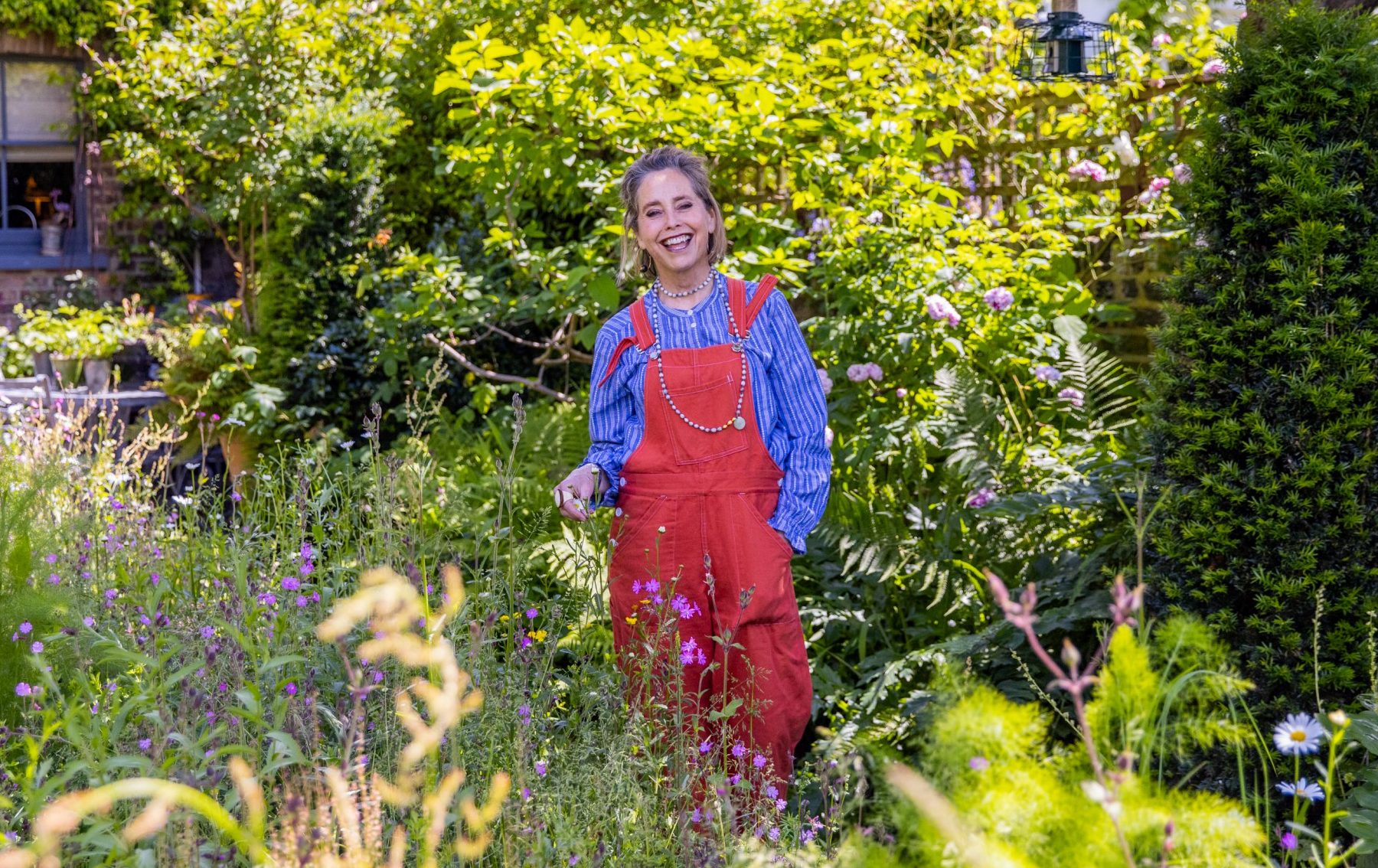
doesn’t mean you can’t think big, according to garden designer Butter Wakefield. “Anything is possible. You just have to think creatively,” she says.
.
She prefers to be hands-on with her work, and so she has naturally honed her skills in compact London gardens. Her own, as well as a newly designed outdoor space for Rita Konig, an interior designer, feature in her new Small Garden Design online course for Create Academy. In it, she explores the fundamentals of a good small garden design, from concept and planning, to budget and installation.

Wakefield says: “Most people have small gardens, and they’re much harder than large gardens in that you have to keep a very tight hold on everything that’s going on.” However, there’s no reason that even the smallest garden can’t be magical. “In a little space you really can get the details right and you can create some special moments. Your garden isn’t going to look great all the time, but you can create pockets where there’s always something having its moment.”
, a bench and a coffee table.
She believes that each small space is a curated view that should give as much pleasure when enjoyed from the inside as from the outside: “So much of the time the weather isn’t wonderful, so you want to create magic moments that you can enjoy from your home as well.”
Here are Wakefield’s 11 top tips and tricks for small gardens.
1. Harmonise the garden with your home
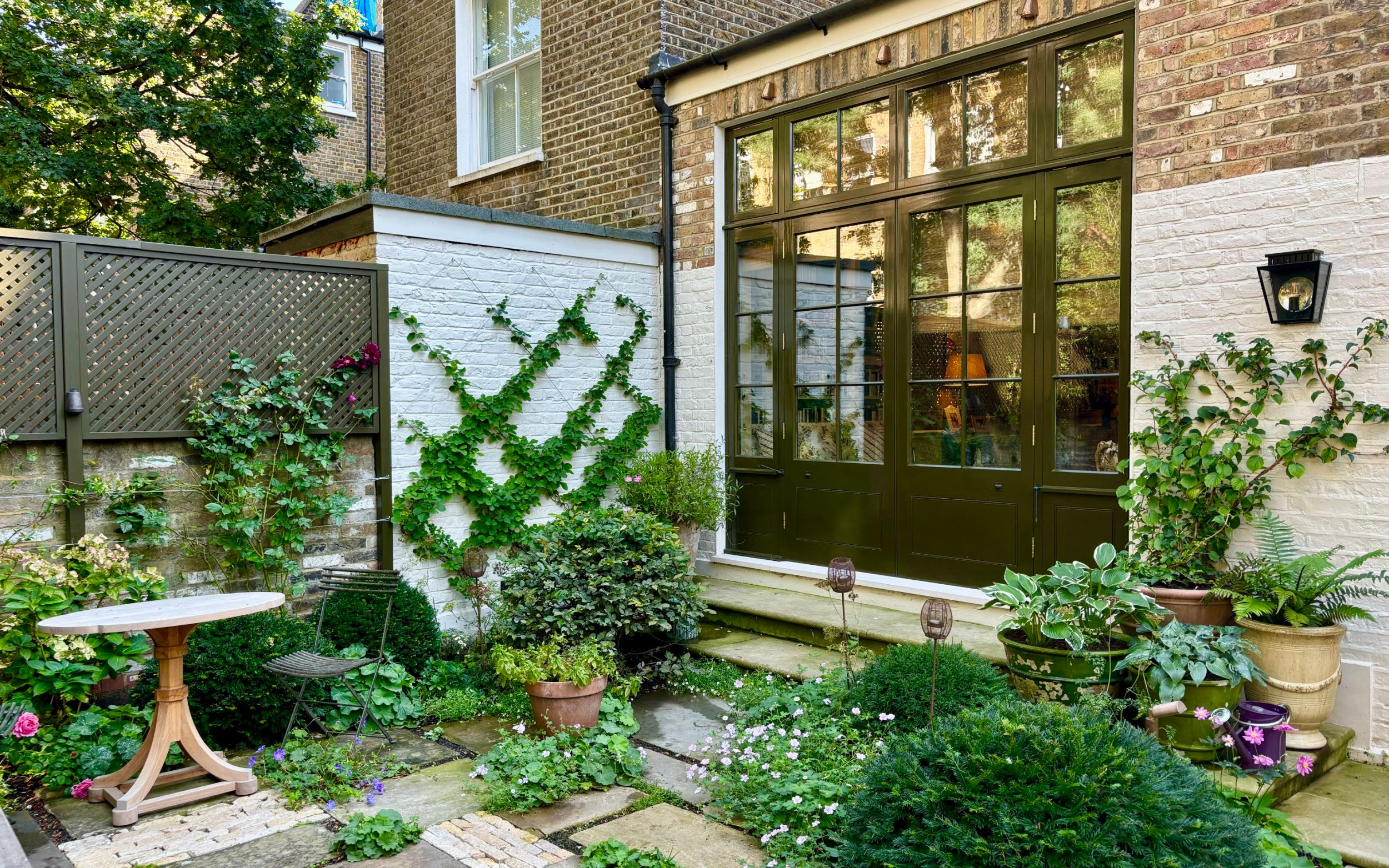
Try standing in your garden and looking back to your home. Materially, the view looking back towards the house, as well as from it, should work together.
“If you’ve got a super-modern house, you might not necessarily want York reclaimed stone; you might want a York stone that’s crisper and cleaner to complement the design aesthetic of your house,” says Wakefield.
When it came to Konig’s garden, acknowledging the style of the interior was essential. “Her home is layered and full of beautiful fabrics, colour and texture with real depth; and of course we want that same look outside. So we added a lovely, rich, dark trellis that’s the same colour as the doors and windows on the back of her house. They are in complete dialogue with each other.”
2. Consider your boundaries
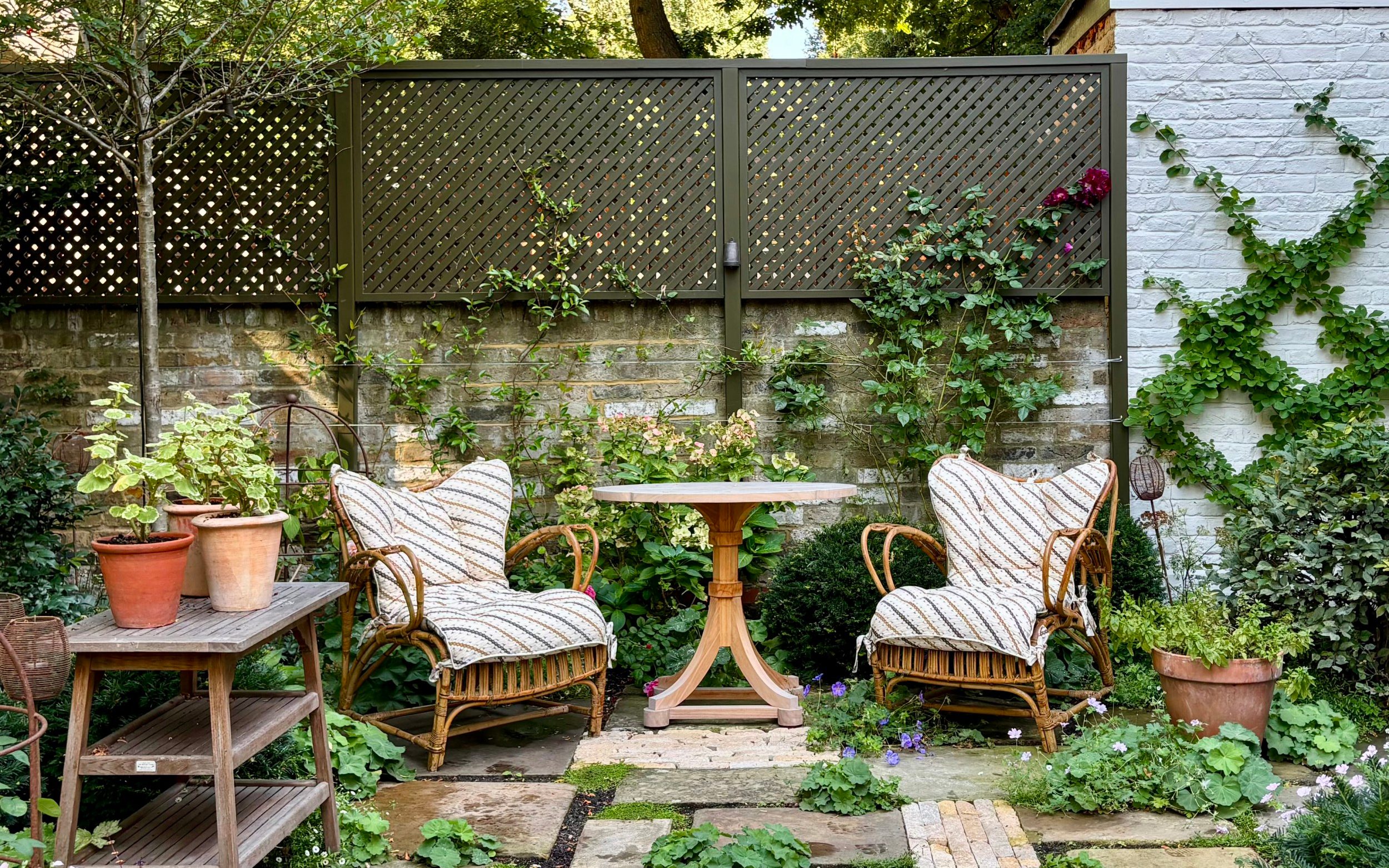
up at a higher level,” says Wakefield.
with evergreen climbers and roses: “Suddenly it feels private and special when you’re in a cocoon state of green.”
3. Play with scale
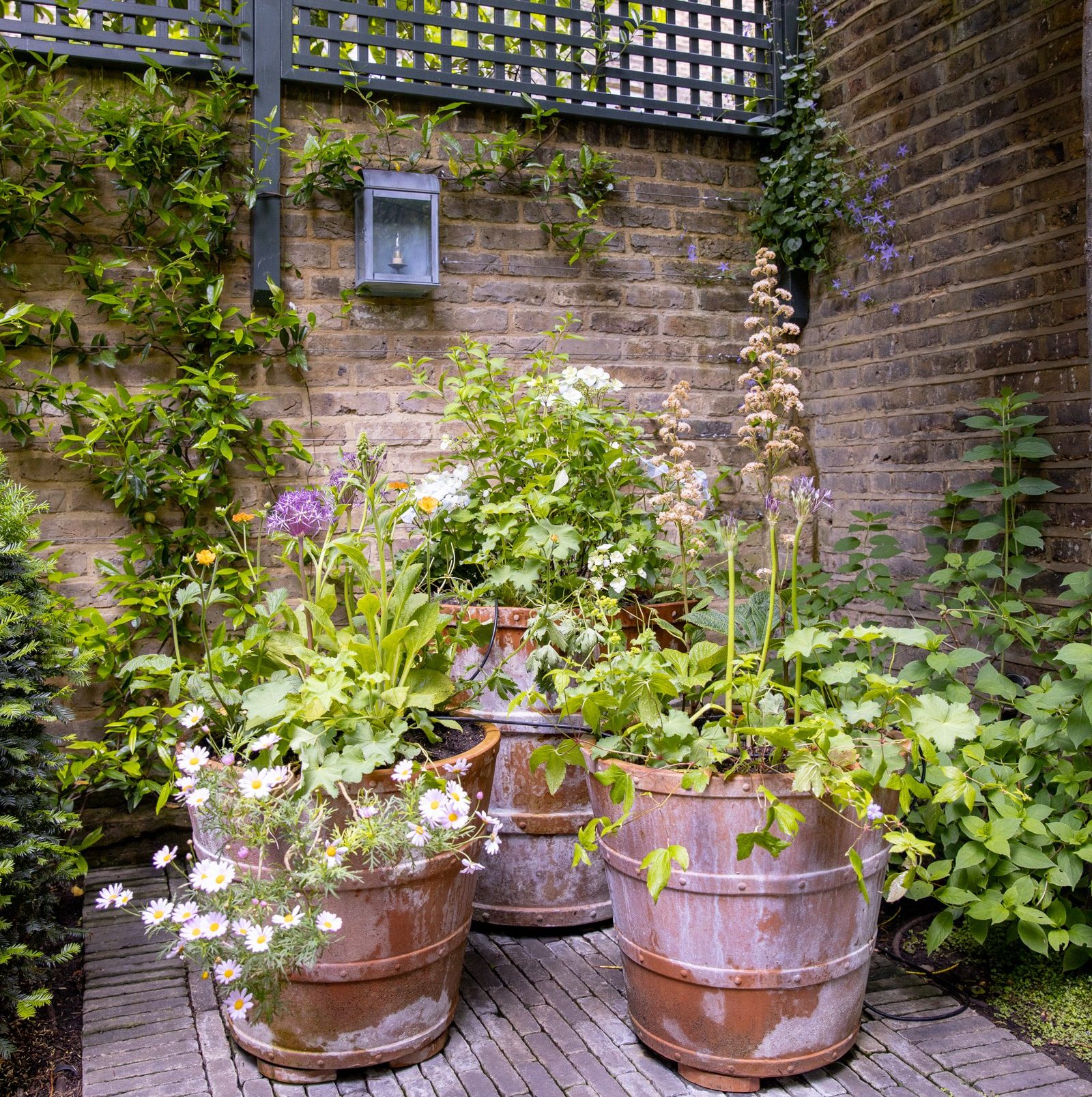
In a small space, it is better to have one or two big pots than 25,000 little pots, advises Wakefield. “Having the confidence to do something oversized in a small place creates drama and a bit of tension. It is wonderful to see something that really elevates a tiny space.”
Interior designers use this trick all the time; putting a large-scale wallpaper in a small bathroom, for example. Wakefield says: “It’s an optical illusion, but it makes the space feel bigger. And a big pot in a small space does the same thing.” Just make sure you’ve done your measurements first: “You do need to know with confidence that you can get your big pot through to the garden!”
4. Break up the view
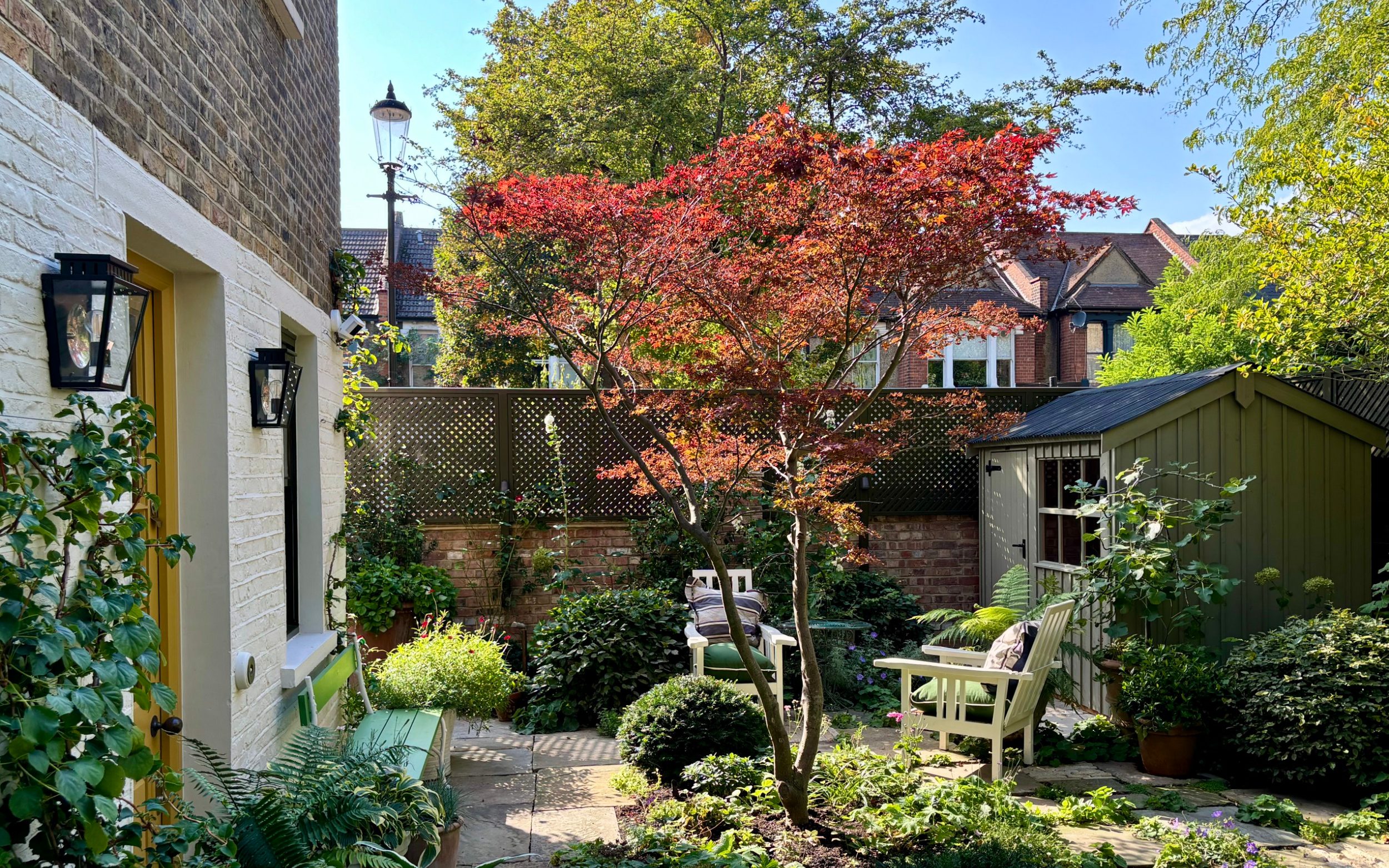
or a pot, will be more effective at creating depth of field.
5. Create vertical interest
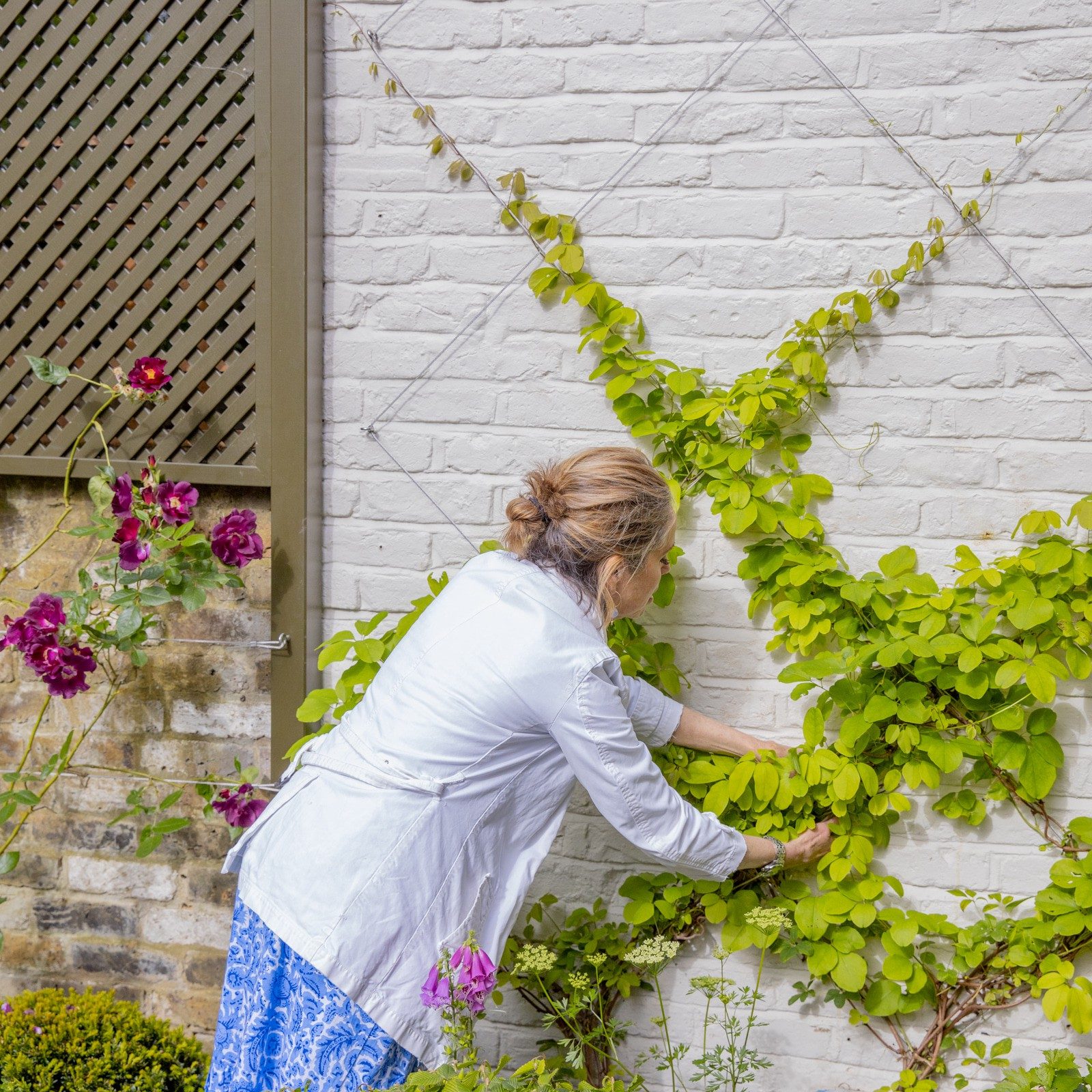
Similarly, in a small garden you want to make sure you’re not working on one plane, but creating interest at all levels moving upwards, explains Wakefield. “A tree in the right place will draw the eye upwards, as will climbers,” she says. Wakefield is also a fan of wall brackets with pots placed on or hanging from them. “They are a clever way of getting eye-level and vertical interest.” A pot or two on a table top is an even easier way to create interest at a different height.
6. Add water
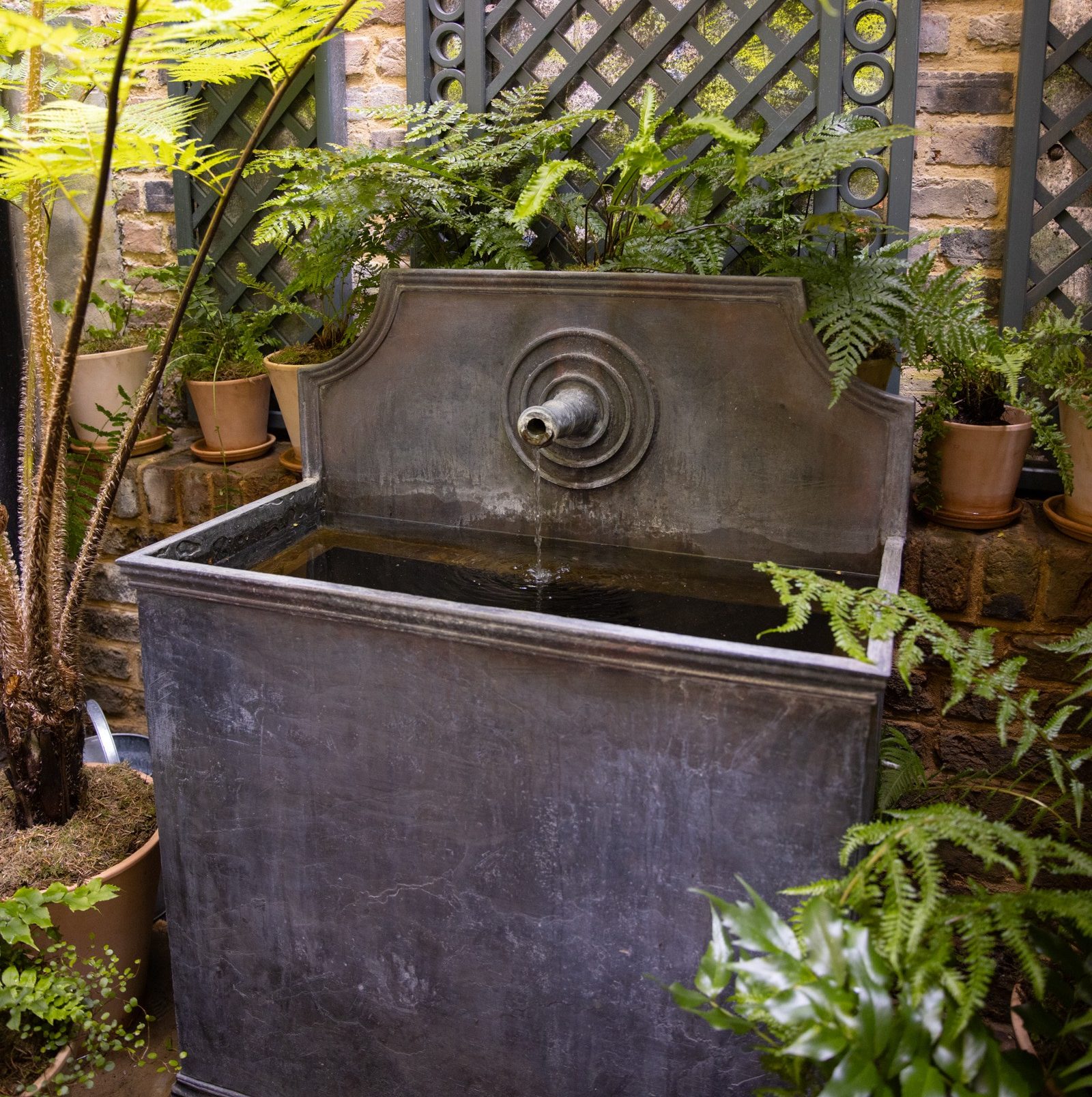
When she wants to create atmosphere, Wakefield adds water. “A little bit of water in the garden is a really special way of creating year-round interest. The sound also dulls down noisy neighbours,” she points out.
If your garden is in a traditional style, she suggests including one “very beautiful” stone trough: “It elevates a space so much. It’s like having one beautiful antique in a room. It creates a sense of scale and grandeur.”
7. Create the illusion of space with mirrors
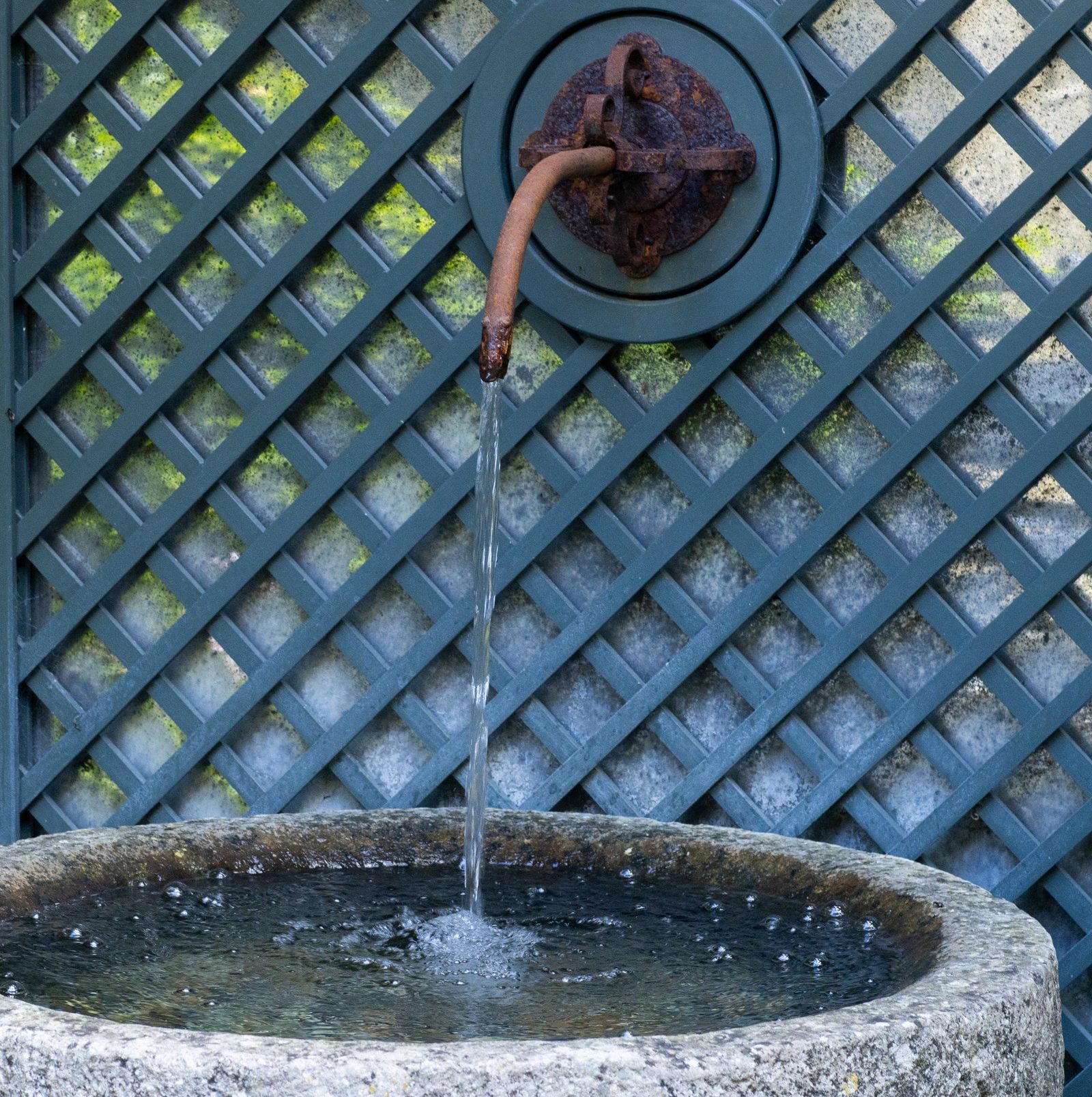
Wakefield loves to put mirrors behind trellis panels to bounce light around and create a feeling of space. There is a caveat though: “Birds find them fascinating because they think they’ve met their mate for life, so you have to cover them with trellis or climbers immediately.”
She always uses antique mirrors for their duller reflection. “You don’t want to see a clear reflection of yourself in the garden.”
Another trick is to put mirrors behind water features: “We then put a light in the water feature. Together the mirror and the light create a sparkling dancing effect on the surface.”
8. Layer up lighting
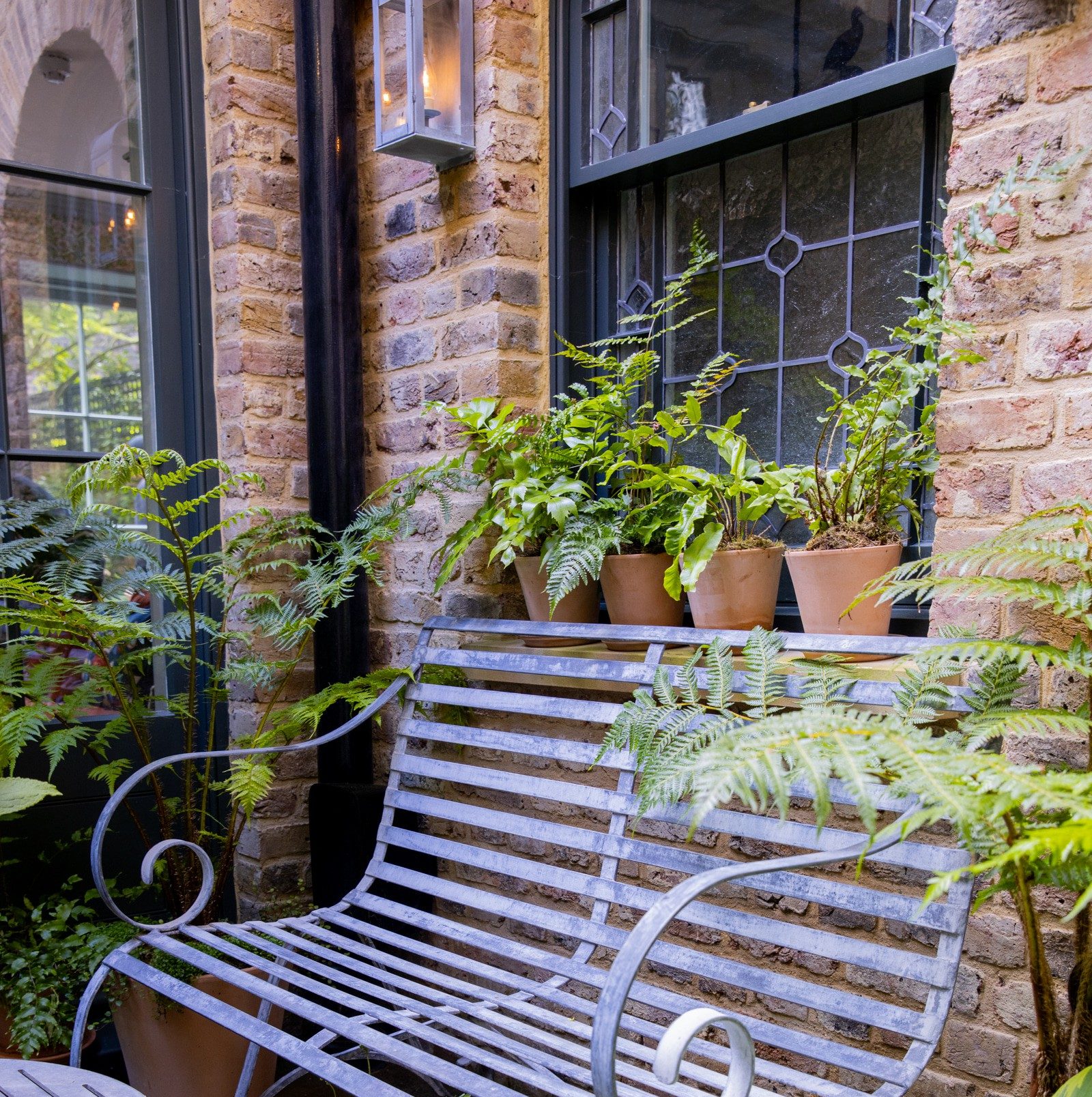
Garden lighting isn’t just for summer evenings. “It brings the garden to life in the dark months of the year, and let’s face it, there are a lot of them,” says Wakefield. Her own lights go on at around 6pm and are switched off around 9pm. “It just creates something to look at, instead of a black dark space out there.”
Good garden lighting is subtle and layered, she explains. “It’s like lamps in a room. You have downlighters, a lamp on a table and then things pointing up from the ground. That’s exactly how we design the light in our gardens too, to be multidirectional.”
Conscious of night-time light pollution, Wakefield never leaves them on late at night. “You have to think about your neighbours and the wildlife.”
And the fairy lights in her wisteria aren’t switched on until Dec 1. “It’s a very nice way to ring in the season of joy.”
9. Add interest under foot
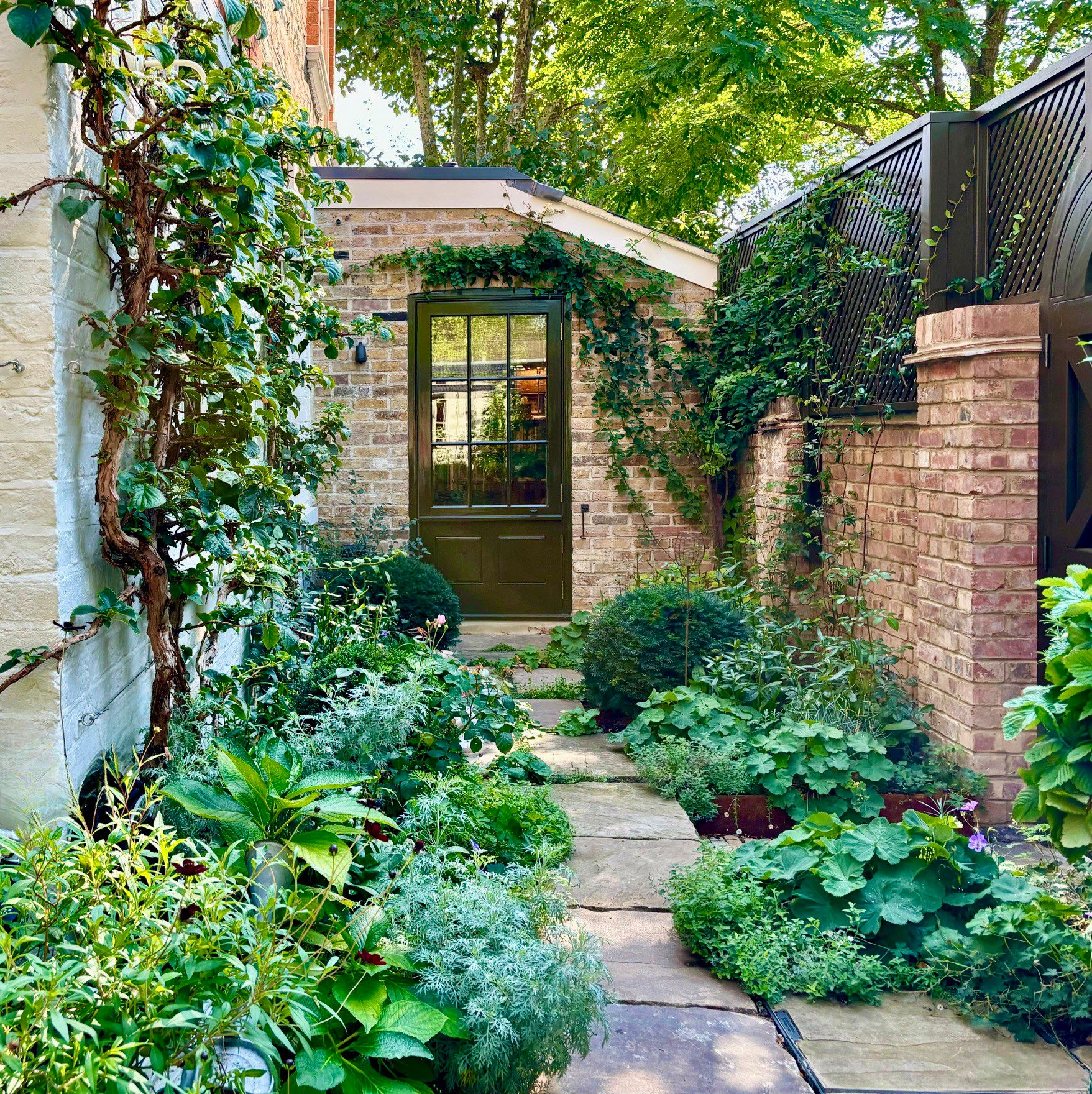
In a small space, having considered paving to create an interesting backdrop becomes more important. Instead of having a standard brick bond, for example, you might think about laying it in a herringbone pattern, or blending in greenery into the gaps.
“I love having green coming up in between the bricks,” says Wakefield. As for what to plant, erigeron wants a sunny position, while mind-your-own-business will grow anywhere, especially in the shade. “For me, having that with a bit of interesting paving, and a fern or two, is job done.”
One thing Wakefield can’t stand is bare brown earth. “It’s not good for the environment either. You want carbon-sequestering plants that keep our air clean.”
10. Remember scent
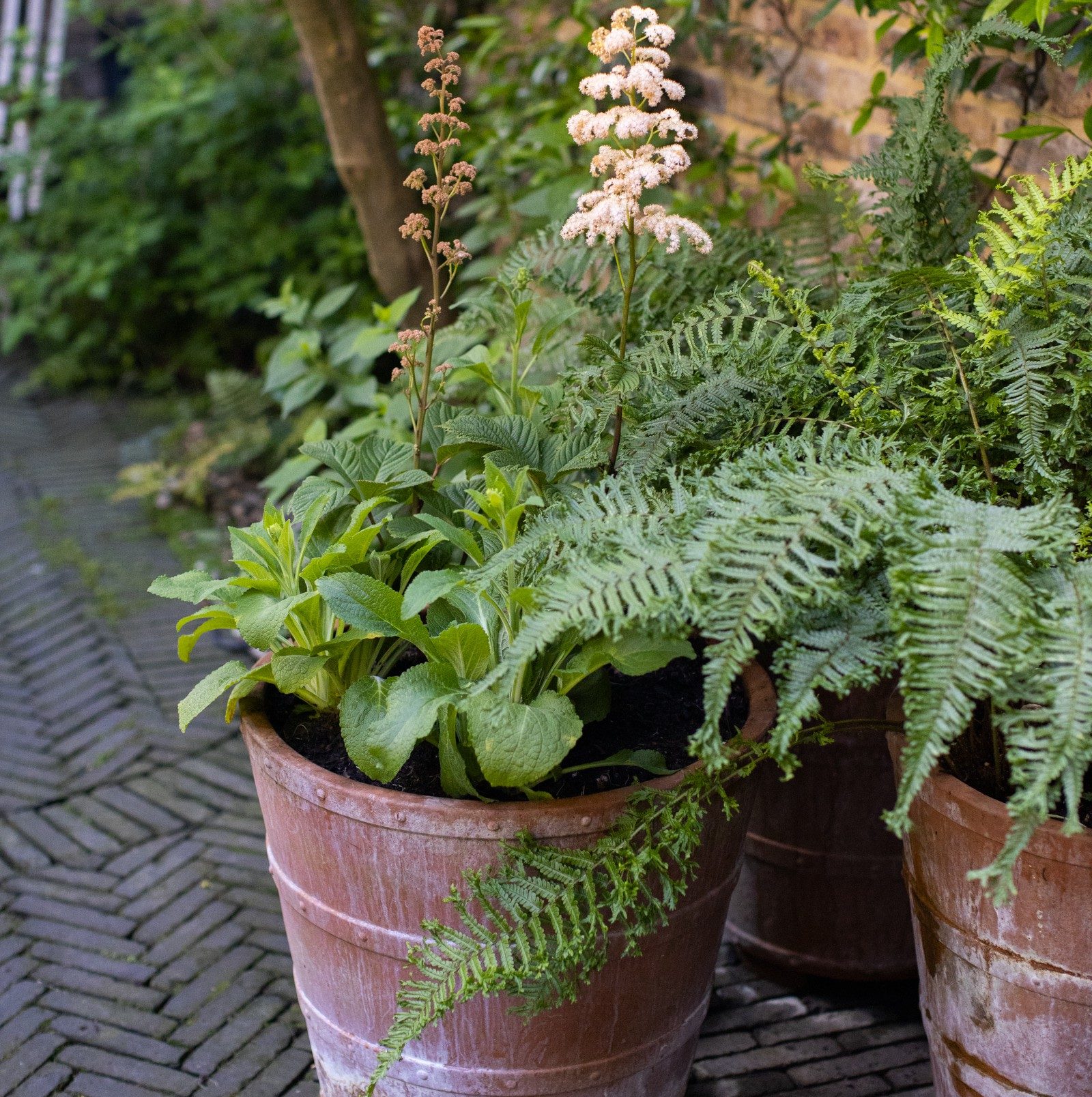
,” says Wakefield. “The scent of a good rose is heaven. It stops you in your tracks.”
She also loves herbs such as purple basil, thyme and oregano, for their smell and the important role they play for pollinators.
“The only thing about herbs is you do need the sunshine. If your garden is shadier, try hellebores.”
11. Your front garden matters
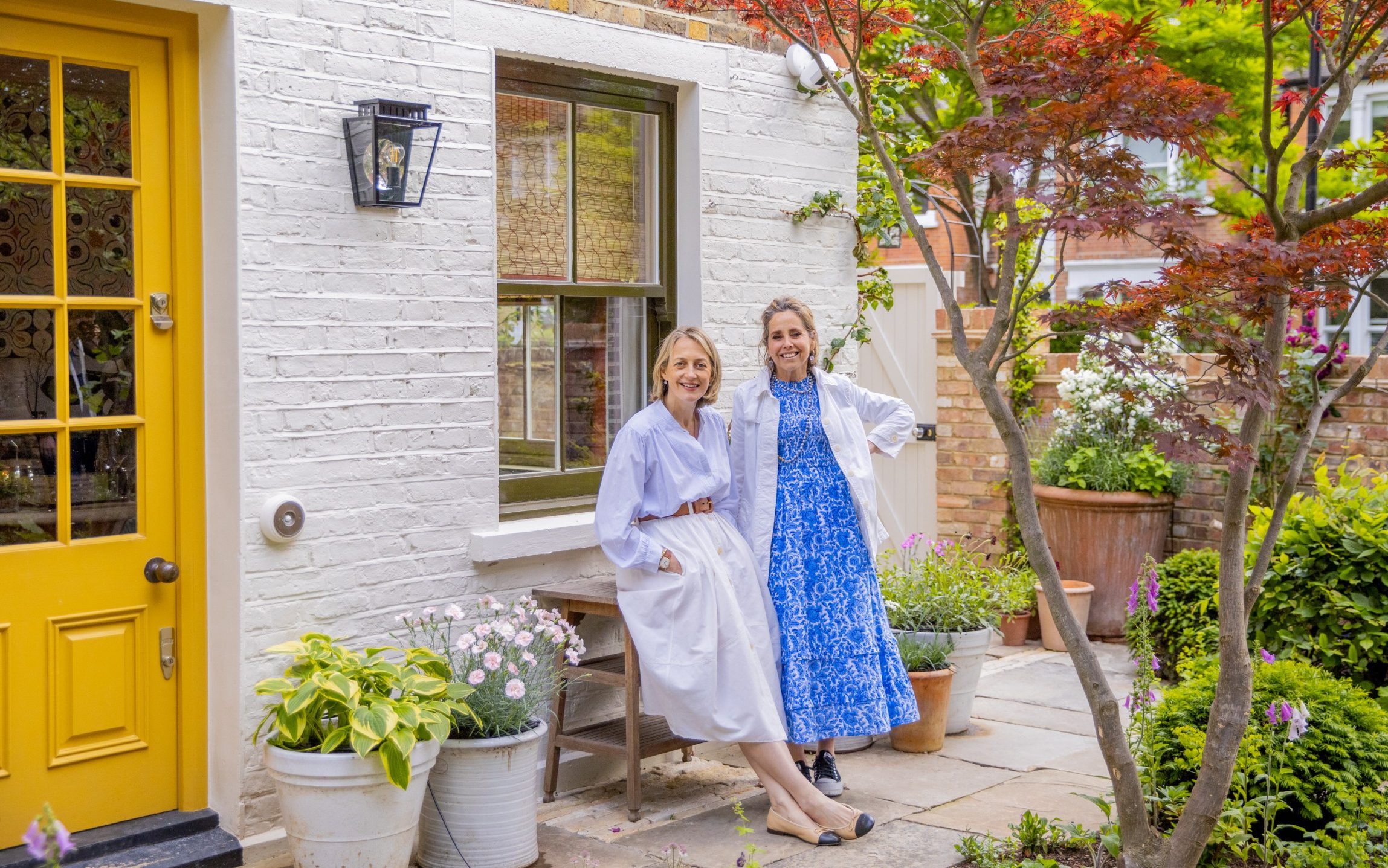
. “I might not be going out in my rear garden so much, but I have to leave the house through my front garden so I do think about how to bring it maximum interest and joy.”
Winter scent and early-flowering plants are her go-to: “I’ve got hellebores and sarcococca, daphne and things that are early into leaf, as well as early-flowering bulbs like crocus, snowdrops and primulas.”
An informal camellia hedge provides year-round privacy. “That one starts to flower almost at Christmas time and goes on until April,” says Wakefield. “There’s always something doing its thing.”
Small Garden Design with Butter Wakefield is now available from Create Academy for £97; createacademy.com
Play The Telegraph’s brilliant range of Puzzles - and feel brighter every day. Train your brain and boost your mood with PlusWord, the Mini Crossword, the fearsome Killer Sudoku and even the classic Cryptic Crossword.


Post a Comment
0Comments